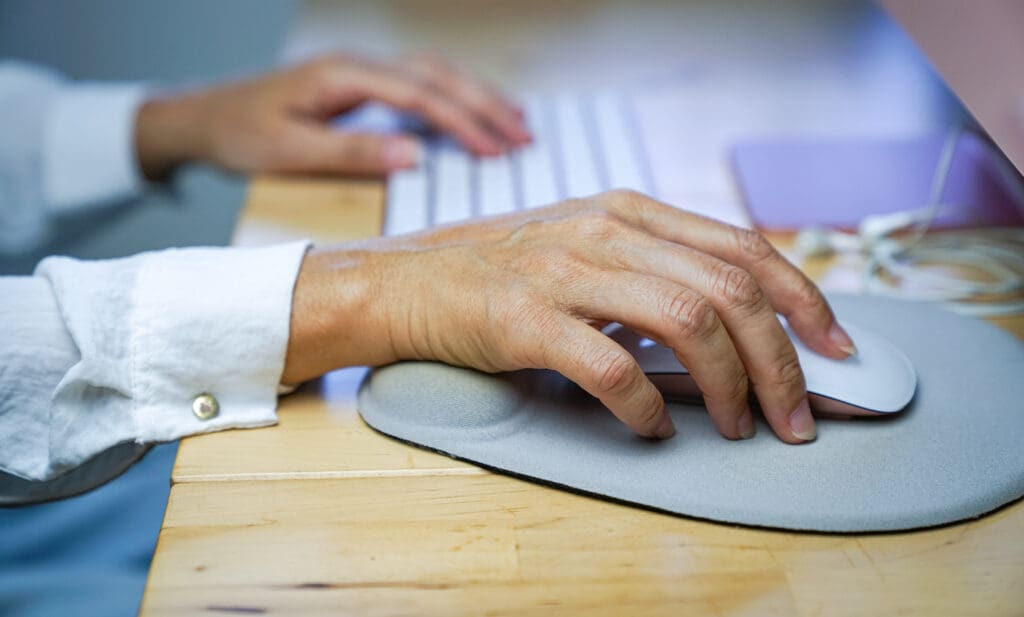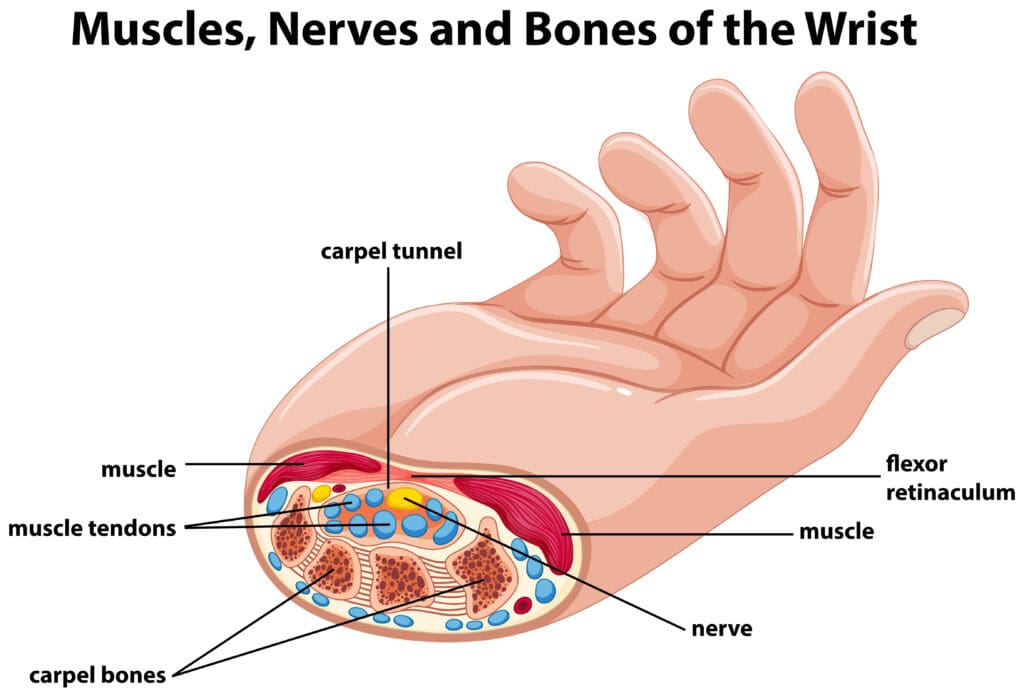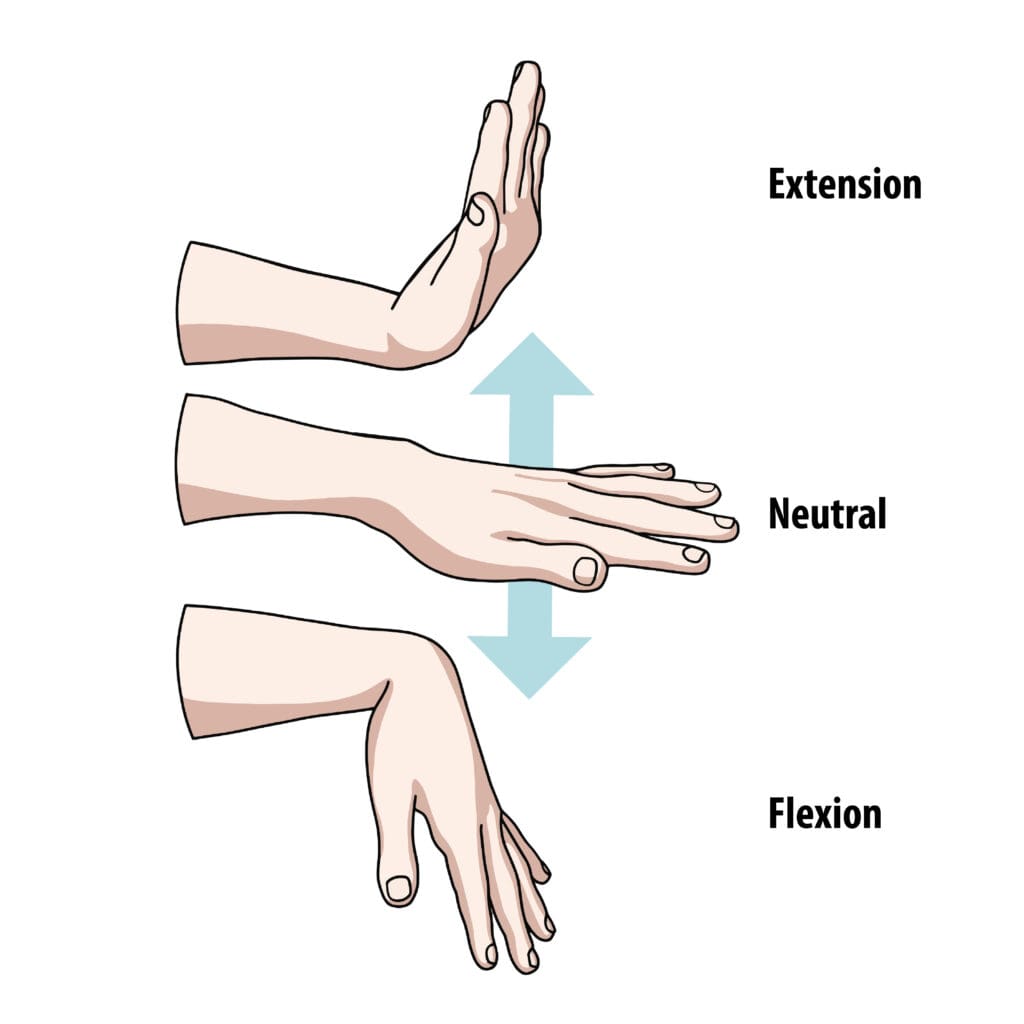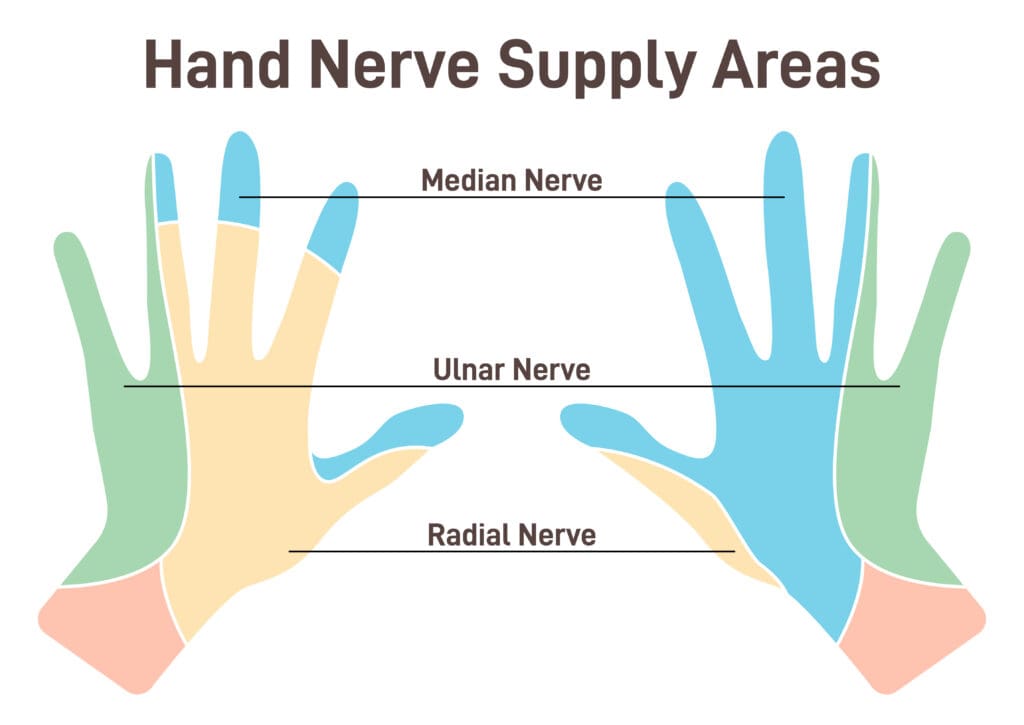Palm Rests: Game Changers or Pain Makers?
This blog post was written by Jeffrey Sheridan, Injury Prevention Specialist, who analyzes workstation set-up and ergonomics as part of our Employer Services department.

Not a day goes by where I don’t see someone using a palm rest for their mouse and keyboard during a workstation ergonomics analysis. I used to order them for everyone to alleviate wrist pain.
“Here’s the solution for all of your carpal tunnel problems,” I would say.
Well, that was then, and this is now. I’m a little older and wiser, and like with most topics, I’ve gotten caught up in the pros and cons of that simple, overlooked piece of gel or foam you’re resting your wrists on.
If you’ve been using a palm rest for years without problems, kudos. However, you may be surprised to hear the facts about the impact these pads have on your wrists and hands.
What is a palm rest?
A palm rest (also referred to as a wrist rest) is simply a soft, built-up pad to rest your hand or wrists on while using a keyboard or mouse. They can be made of any soft material but are most often made with gel or foam. The idea is that they provide cushioned support, to keep your hands in proper alignment while performing typing or mousing tasks. Unfortunately, they also can create compression when not used properly.

Are Palm Rests Good for Your Wrists?
Let’s look at the science. As you can see from the diagram, the bottom of the wrist is a crowded space. Even small disturbances can have large impacts because of this. The median nerve is especially susceptible to compression in this space. This compression, in turn, causes the symptoms most associated with carpal tunnel syndrome: numbness, tingling, pain in the wrist and thumb, index and middle fingers and weakness.
This is most associated with extreme or continuous flexion or extension in the wrist, hence the ergonomic principle of keeping your wrist straight or neutral.

There are also other nerves that run through your wrist that can be impacted. Say you have an upright mouse, and your pinky side is towards the table. In this position you can compress the ulnar nerve, which runs along the pinky side of your wrist.

I previously mentioned that some people call them wrist rests, others palm rests. Well, they are one and the same item. The difference is how they are used. This is where the official debate begins. One describes resting on the palm and one resting on the wrist. When used correctly, an individual would be resting their palm, creating a more neutral position to the mouse or keyboard. But resting your wrist on the pad can cause the compression in the carpal tunnel area.
You heard that right! Even though it’s soft, if it isn’t properly aligned, there is potential to cause damage. A better solution is to create a proper ergonomic desk set-up, including chair, arm rest, and monitor alignment tailored to you and your workspace.
Creating a workspace where no pads are needed is a much better solution than using palm rests.
If I haven’t persuaded you to stop using your palm rest today, at the very least, I hope I’ve dissuaded you from using a wrist rest. Good health and proper ergonomics to all.
The best way to ensure proper ergonomics to to work with professionals. Click here to learn more about our Employer Services department and how we can help with all of your health and wellness needs.
